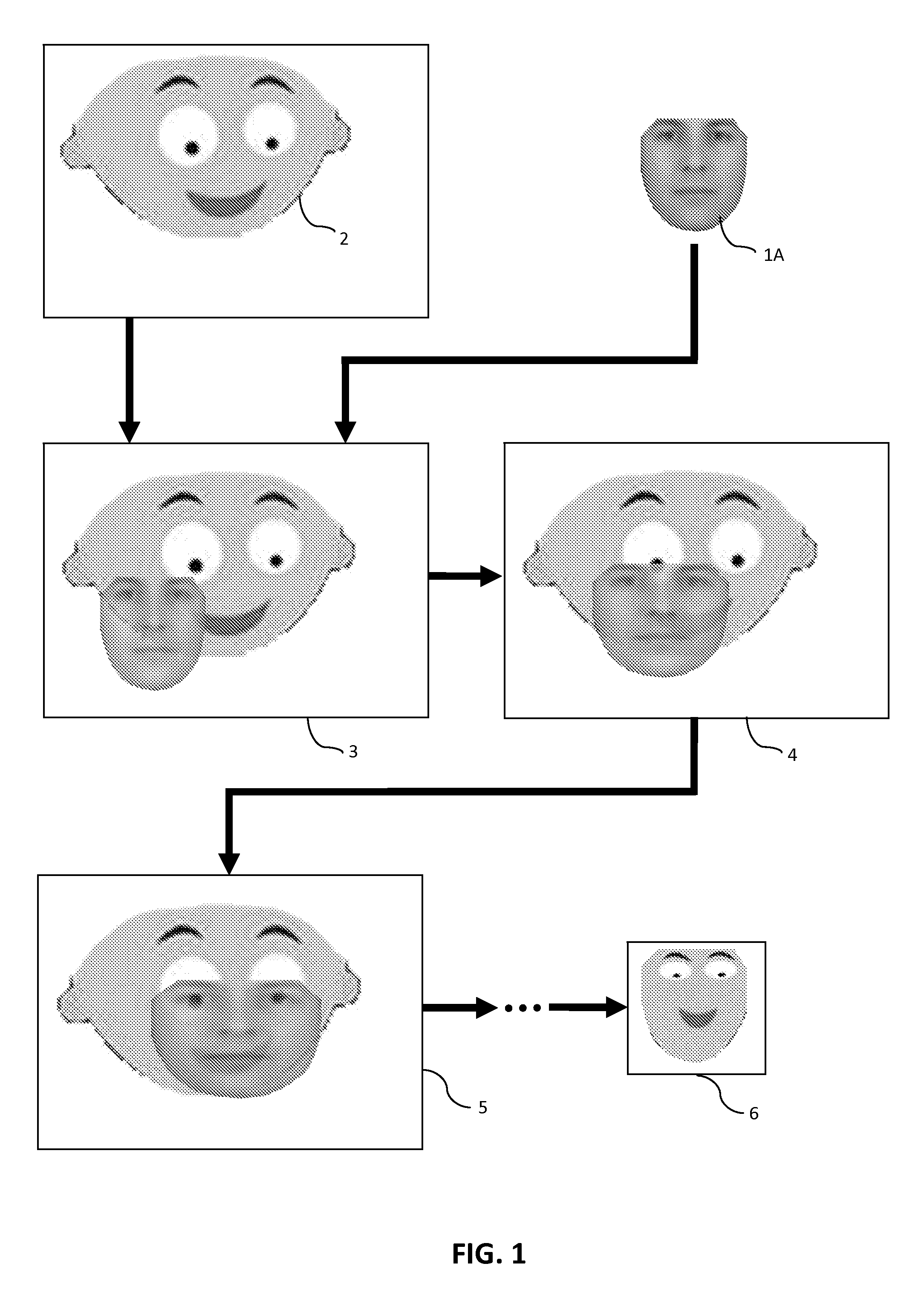Hierarchical tree AAM
a hierarchy and appearance technology, applied in the field of active appearance models, aams, machines and methods, can solve the problems of ineffective approaches, difficult to understand human faces, and easy to be limited by these approaches, and achieve the effect of fast alignment process
- Summary
- Abstract
- Description
- Claims
- Application Information
AI Technical Summary
Benefits of technology
Problems solved by technology
Method used
Image
Examples
Embodiment Construction
[0073]With reference to FIGS. 2 and 3, before an Active Appearance Model machine (AAM) 25 may be used, it must first be trained to recognize a specific class of objects. For illustrative purposes, the following discussion will assume that AAM 25 is designed to recognize specific features of a human face, but it is to be understood that the present invention may be applied to any class of object.
[0074]A model face 1 may be constructed from a training library 31 of individual training images 11_1 to 11—n (i.e. true examples of valid faces). Typically, an individual manually places “landmark” points on each sample face in each training image to outline specific features characteristic to the class of object being represented. The landmark points are ideally selected in such a way that the landmark points outline distinguishable features within the class of object common to every training image.
[0075]For instance, a common feature within a human face class may be the eyes. When building...
PUM
 Login to View More
Login to View More Abstract
Description
Claims
Application Information
 Login to View More
Login to View More - R&D
- Intellectual Property
- Life Sciences
- Materials
- Tech Scout
- Unparalleled Data Quality
- Higher Quality Content
- 60% Fewer Hallucinations
Browse by: Latest US Patents, China's latest patents, Technical Efficacy Thesaurus, Application Domain, Technology Topic, Popular Technical Reports.
© 2025 PatSnap. All rights reserved.Legal|Privacy policy|Modern Slavery Act Transparency Statement|Sitemap|About US| Contact US: help@patsnap.com



